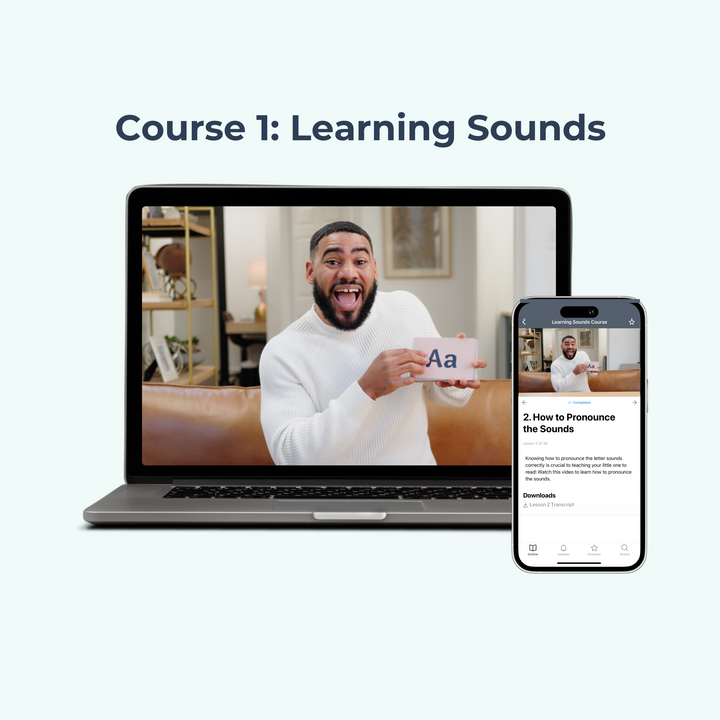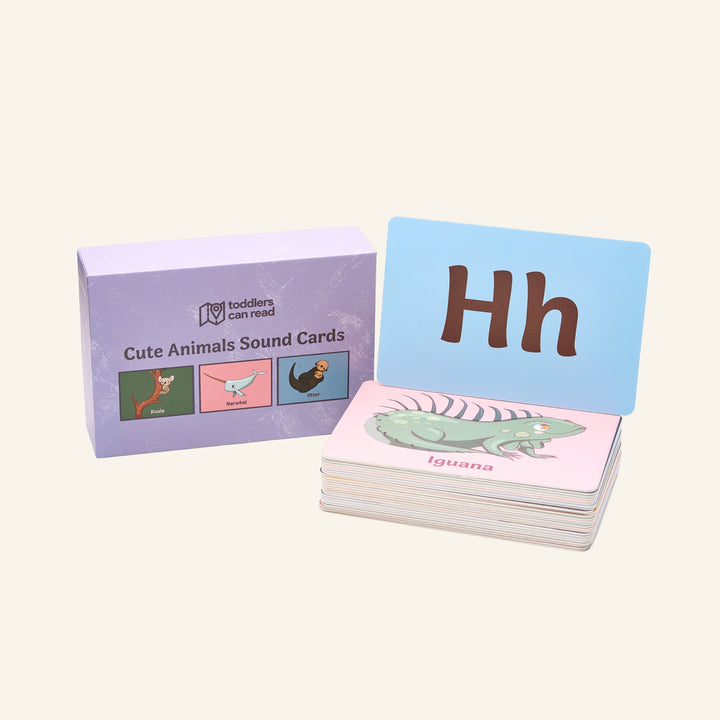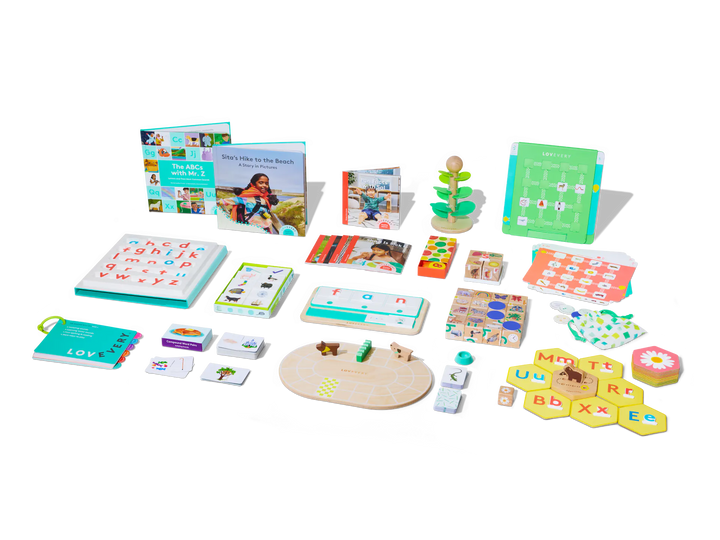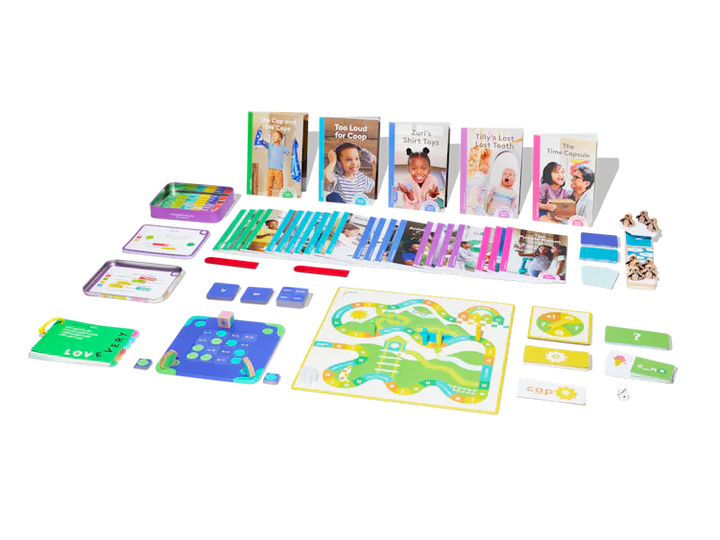Lovevery Reading Skill Set Part 1: Sounds to Reading
Lovevery Reading Skill Set Part 1: Sounds to Reading
Pre-K and Kindergarten skills
Make reading fun from the start. In this motivating introduction to reading through phonics, your child will learn the most common sound of each letter and how to break up words into sounds.
Only available in the USA & Canada
Couldn't load pickup availability
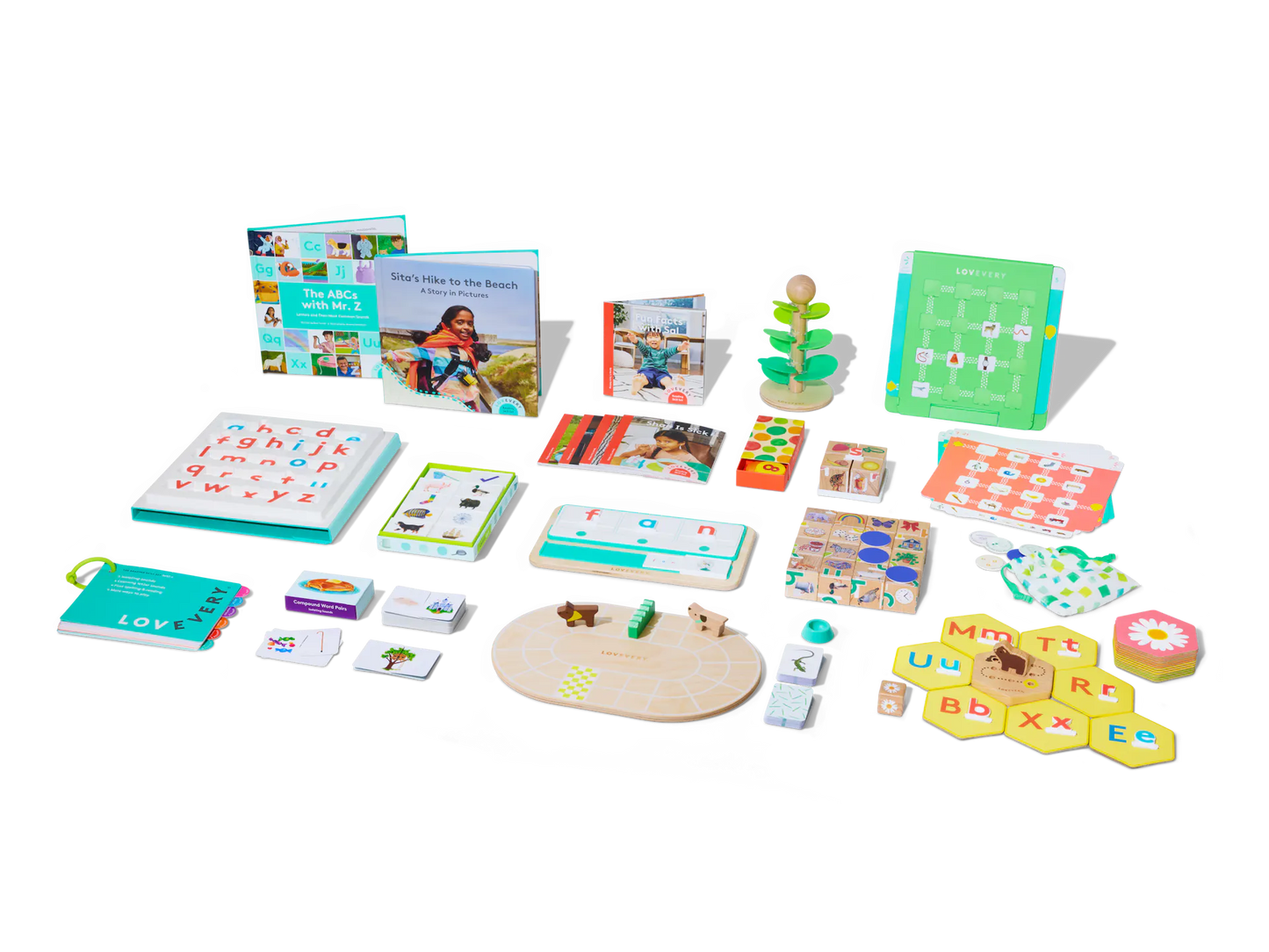
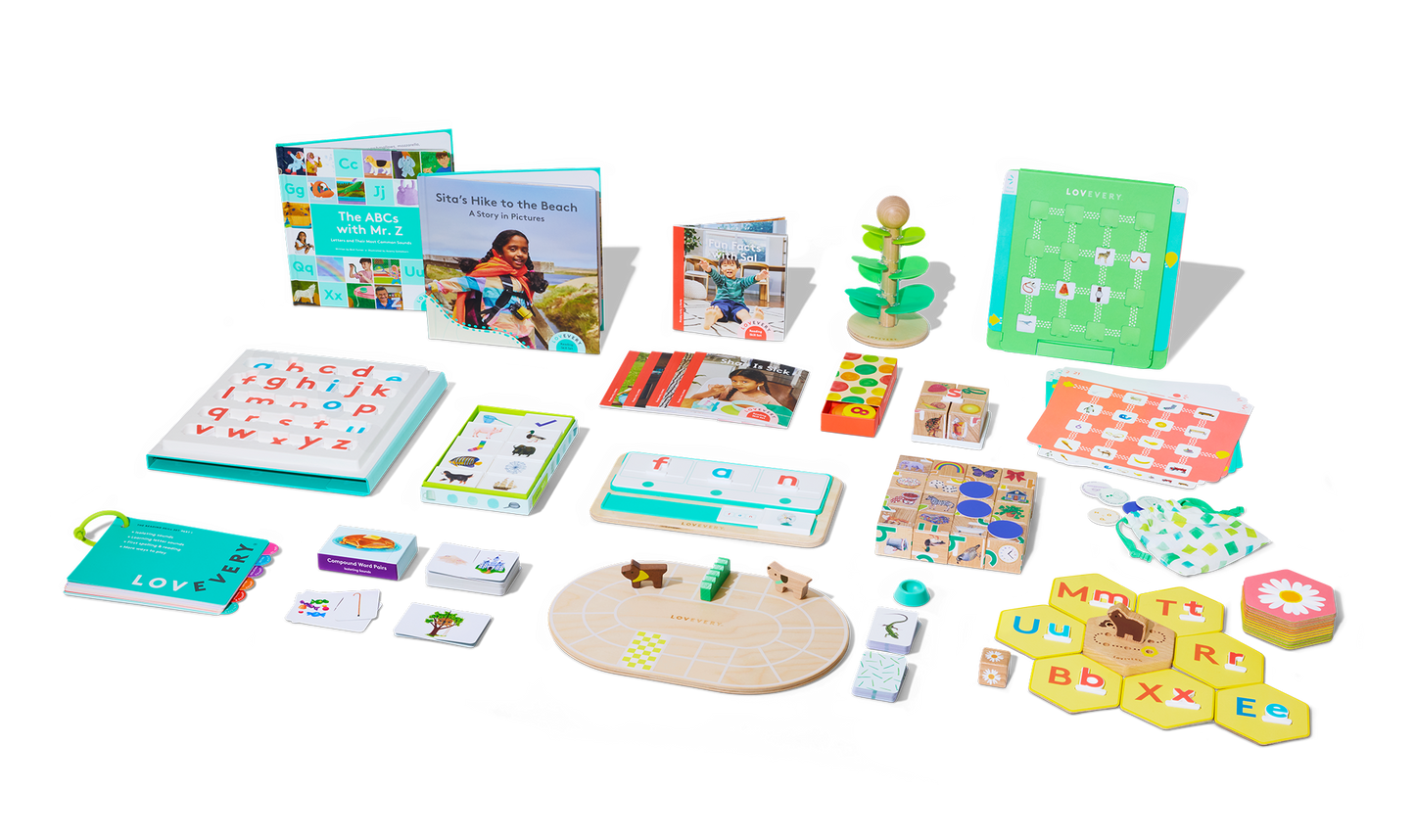
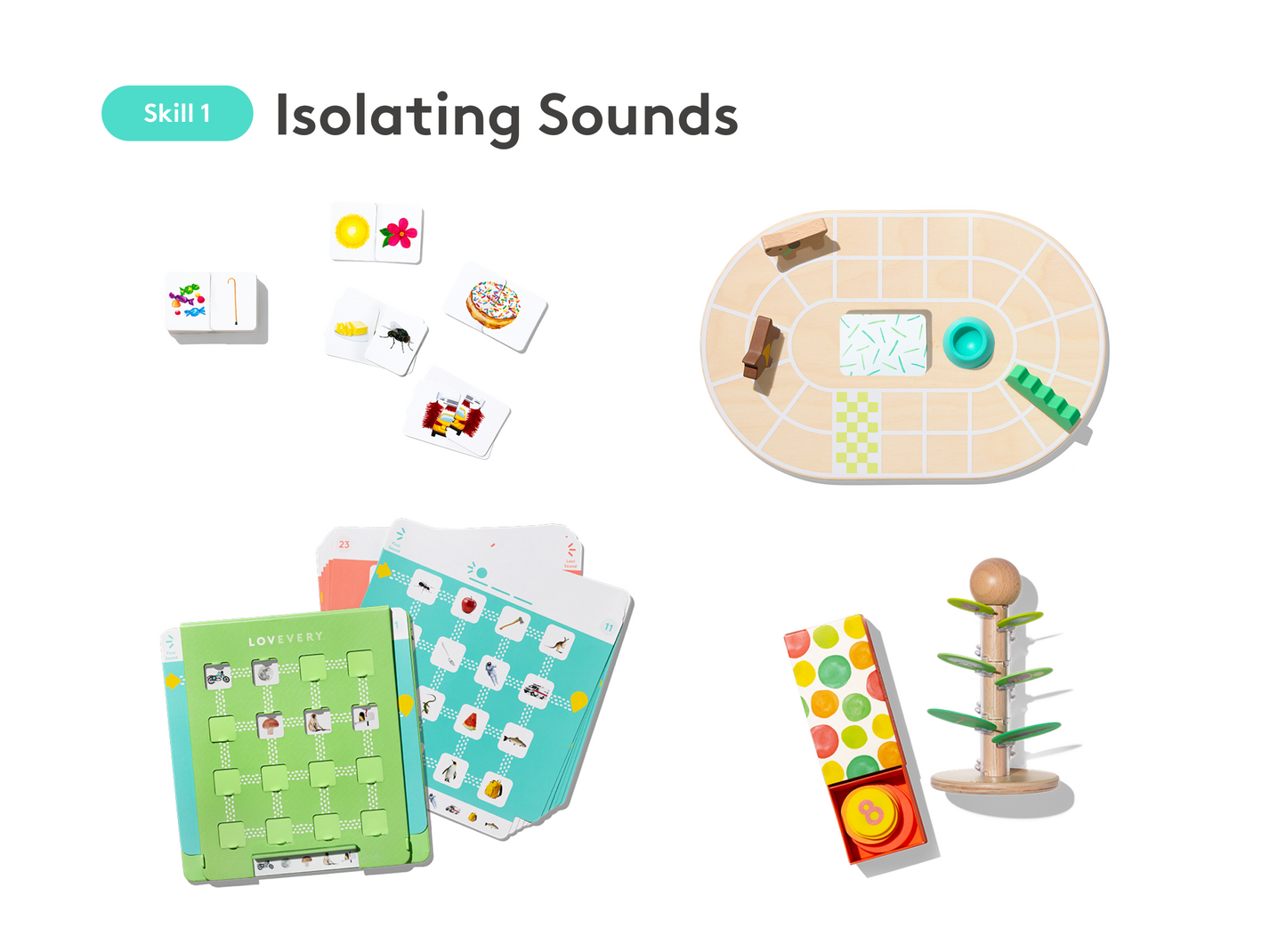



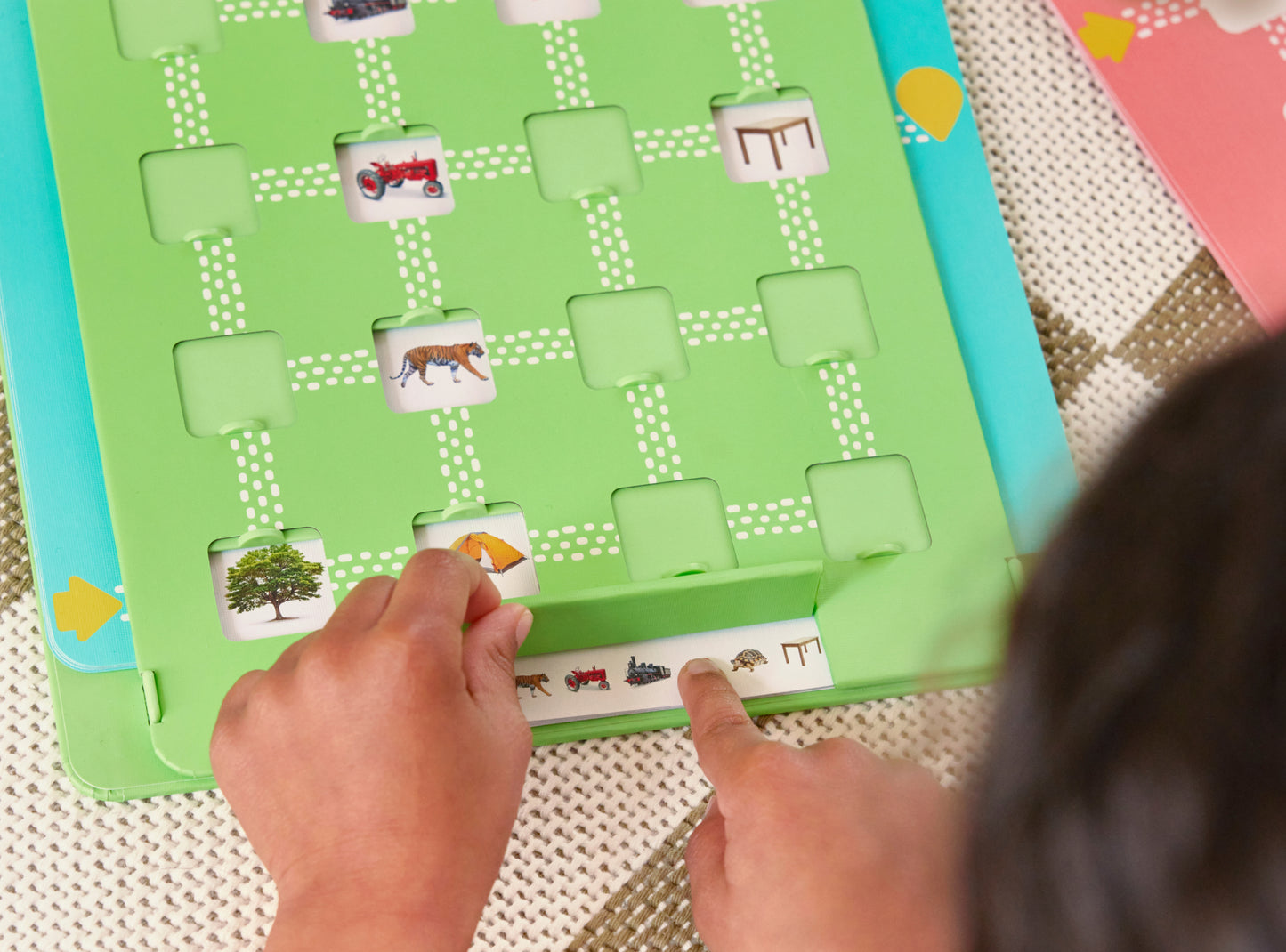
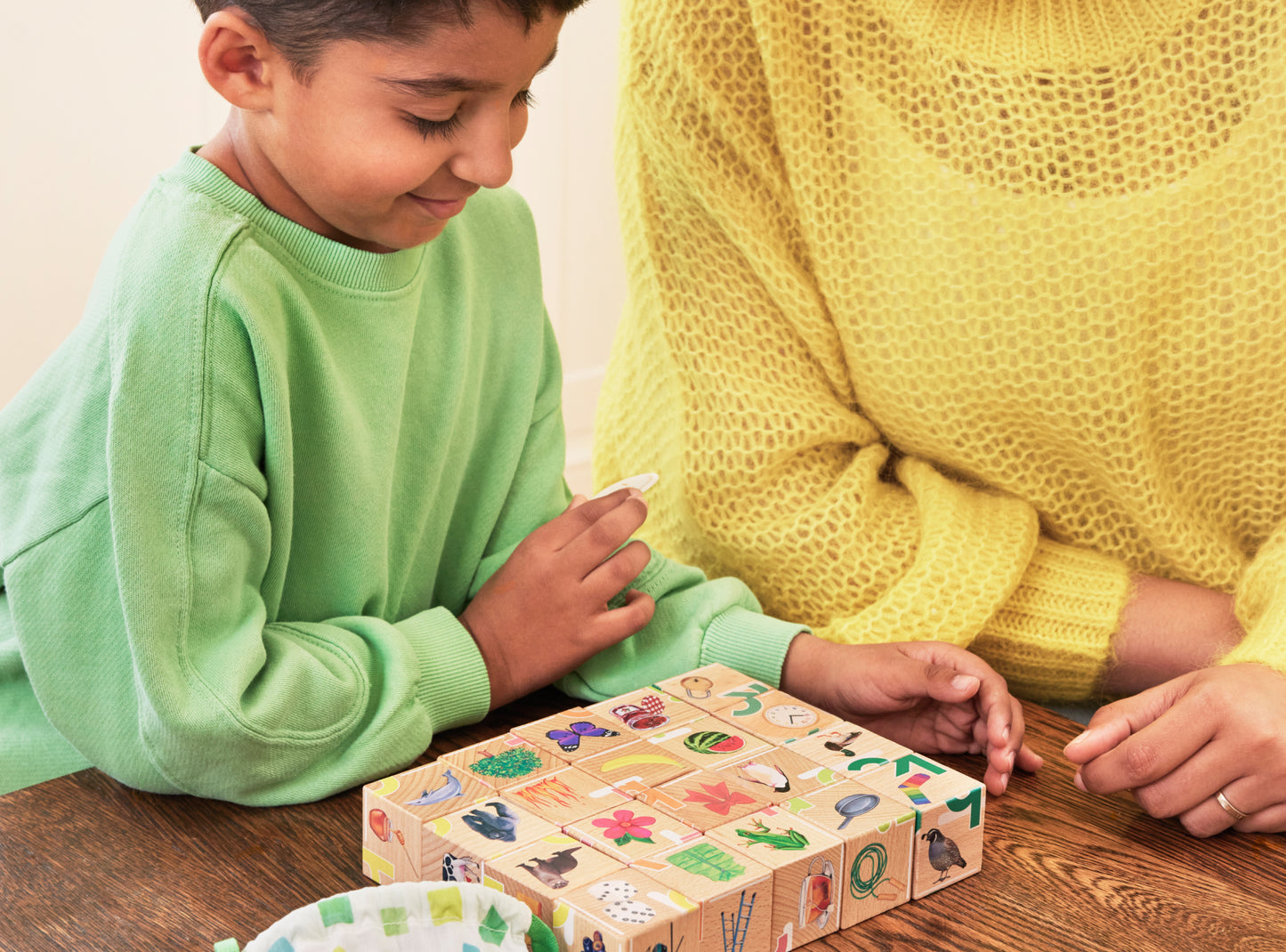
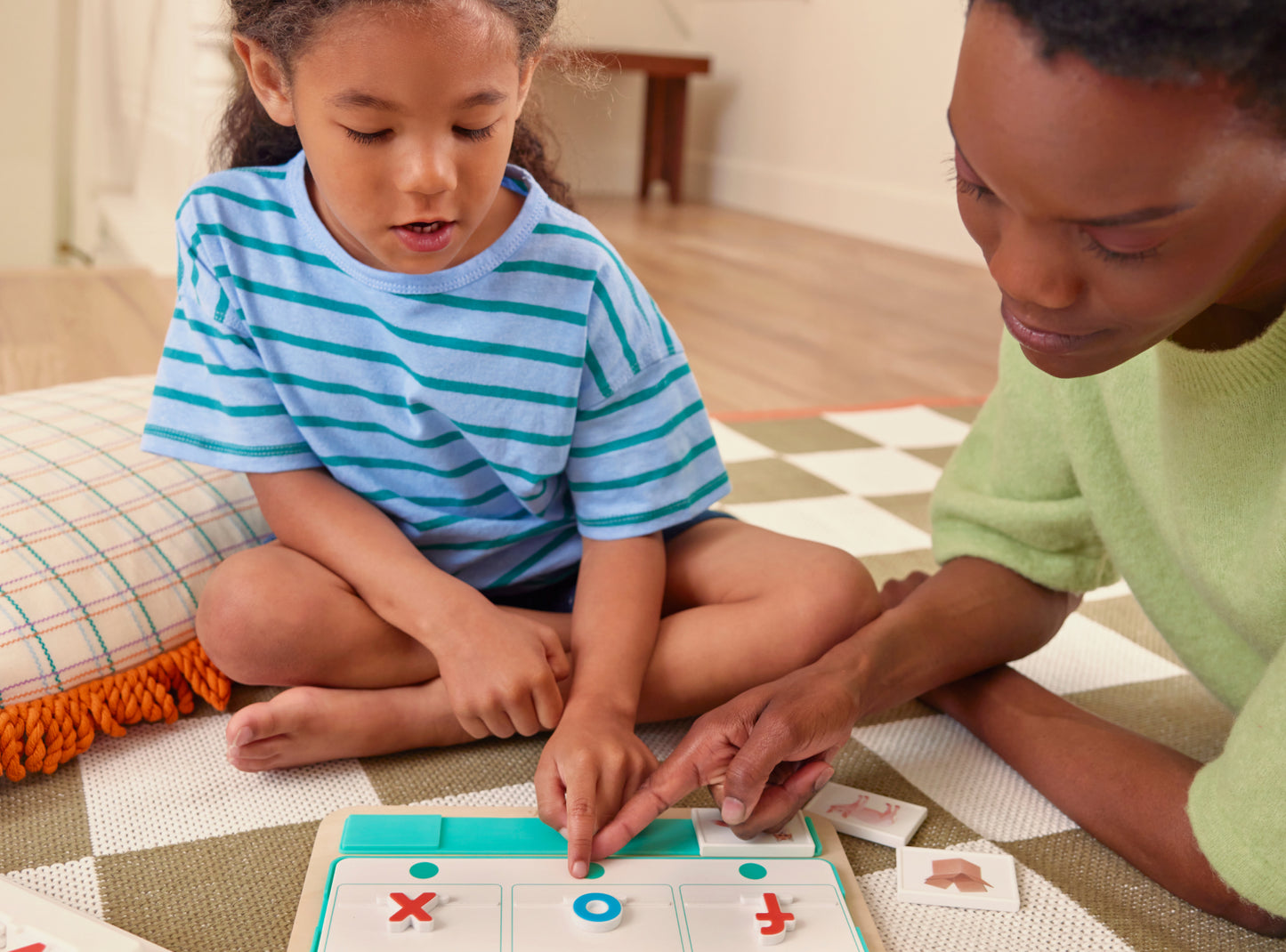
Games and books that keep your child motivated

Compound Word Pairs
Discover that some words are made up of smaller words by matching two cards together to reveal a new word.

Syllable Race Game
Break words into syllables as you race your dog around the track, making a wood-on-wood tapping sound to hear each syllable of a word.

Rhyming Leaves Game
First identify, then make rhymes in this game where two players work together to add or remove leaves from the tree.

Follow the Sound Maze
Move through the maze by finding images with the same first or last letter sound. Includes a fun reveal at the end to check their work.

Movable Alphabet
Build words with this 52-letter set of blue vowels and red consonants. Inspired by Montessori and designed to work with games in Part 1.
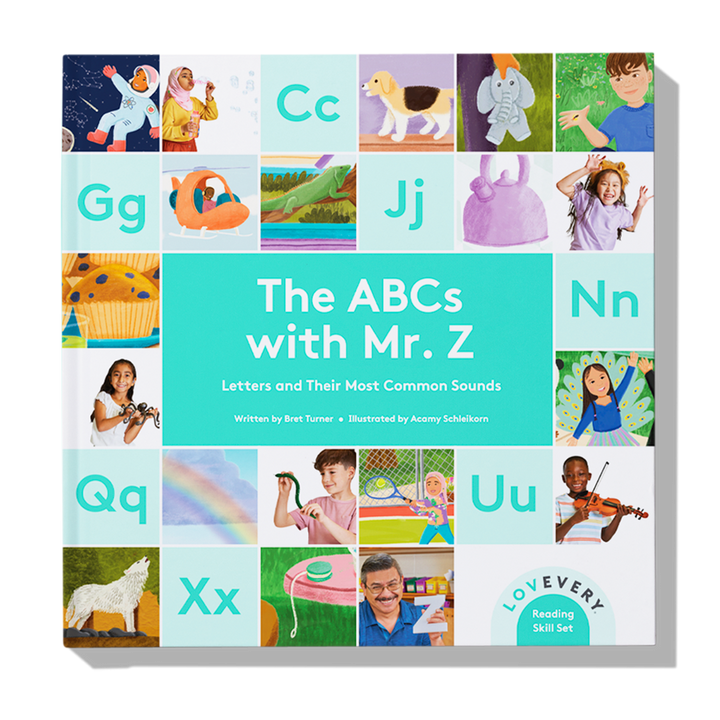
The ABCs with Mr. Z
Avoid early letter sound confusion with this unique book that introduces the most common sound of each letter.

Wooden Letter Sound Blocks
Match 4 images that share the same letter sound to reveal the lowercase letter in the middle of the blocks. Includes 20 blocks.

Skill Tokens
Revisit your new skills in this extension activity for the Wooden Letter Sound Blocks.

Letter Case Beehive
Learn to match lowercase letters to their uppercase form as you race to beat the bear to the honeycomb in this collaborative game.

Spell & Check Slider
Learn to spell 3–5 letter words, then blend the sounds to read the word. Slide the image tile for a fun reveal of the correct spelling.
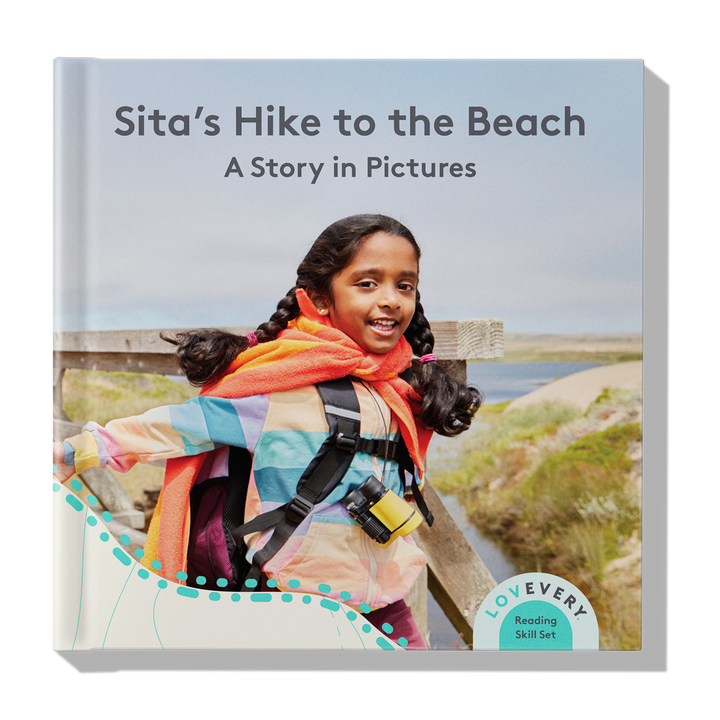
Wordless Book
Build language and awareness of story structure with this book that encourages your child to tell a story before they can read one.
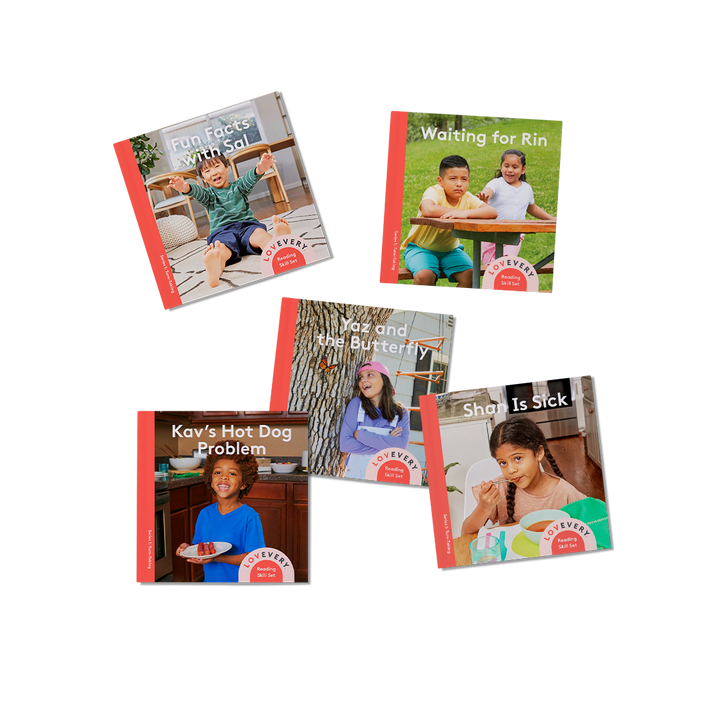
Turn-Taking Book Series
Take turns reading this book series together, with sections for your child to read and practice their letter sound skills.
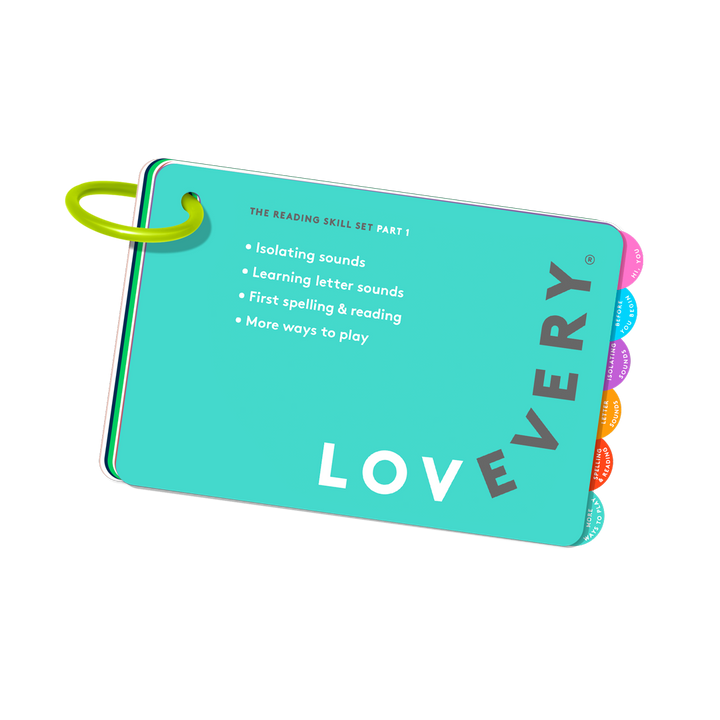
Play Guide
Learn why each skill matters, how to support your child's reading journey, ideas for practicing skills, and tips to keep play fun.
WARNING: CHOKING HAZARD -- Small parts. Not for children under 3 years
Inside Part 1: Sounds to Reading
Common Questions
Is The Reading Skill Set a subscription?
The Reading Skill Set is not a subscription-it's broken into 3 parts and designed to move at your child's pace. You can start with the individaul part your child is ready for, or get the complete set at a discount.
Should I wait until my child finishes their Play Kits Subscription before starting The Reading Skill Set?
There’s no need to wait. Lovevery is a complete early learning system, with The Play Kits focused on stage-based, holistic development, and The Reading Skill Set focused specifically on early literacy skills. Your child can have fun and learn with The Reading Skill Set and The Play Kits at the same time.
What age or grade is The Reading Skill Set for?
Each child progresses at their own pace. No matter the grade-level of your child, studies show that re-visiting sound and foundational phonics skills can help increase confidence and fluency. The grade levels listed below are for reference, but you should start with the part that is the best fit for your child’s current skill level.
- Part 1: Skills often taught in Pre-K and Kindergarten
- Part 2: Skills often taught in Kindergarten and 1st grade
- Part 3: Skills often taught in 1st and 2nd grade
Why did Lovevery take a phonics-based approach to reading?
Research shows that incorporating structured phonics is the most effective approach for learning to read, especially for children experiencing difficulty. However, since reading is a complex process, it’s critical that additional skills—such as oral language, fluency, vocabulary, background knowledge, and phonemic awareness—are supported as well.
Learn more about the research:
Ehri, Linnea. “Teaching Phonemic Awareness and Phonics: An Explanation of the National Reading Panel Meta-Analyses.” In The Voice of Evidence in Reading Research, edited by Peggy McCardle and Vinita Chhabra, 153–186. Baltimore, MD: Paul H. Brookes Publishing Co., 2004.
Ehri, Linnea. “The Science of Learning to Read Words: A Case for Systematic Phonics Instruction.” Reading Research Quarterly 55, no. S1 (2020): S45–S60.
National Reading Panel (U.S.) and National Institute of Child Health and Human Development (U.S.). Report of the National Reading Panel: Teaching Children to Read: An Evidence-Based Assessment of the Scientific Research Literature on Reading and its Implications for Reading Instruction. Washington, DC, 2000.
Regional Educational Laboratory Southeast at Florida State University. “What Does 20 Years of Research Say About Teaching Language and Literacy in Preschool?” U.S. Department of Education, Institute of Education Science, 2021.
How much parent involvement is needed to successfully complete this program?
We designed many of the games to be self-correcting (your child can check their own answers) and to be played independently so that you’re not expected to become a reading teacher. As a parent, you’ll need to introduce or set up each product to get them started. Plus, the multiplayer games are fun for families to play together, so they won’t feel like work.
The Play Guide that comes with each part includes helpful scripts to introduce new skills as well as guidance on what to say when your child makes a mistake.
